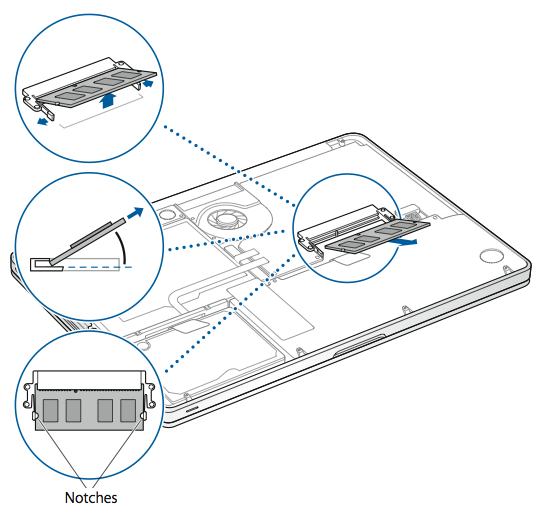

- 2015 MACBOOK PRO RAM USER REPLACEABLE INSTALL
- 2015 MACBOOK PRO RAM USER REPLACEABLE DRIVERS
- 2015 MACBOOK PRO RAM USER REPLACEABLE DRIVER
- 2015 MACBOOK PRO RAM USER REPLACEABLE CODE

The FIRST problem actually manifested itself when booting the Elementary OS USB installer – it would freeze for several seconds, work for a few seconds, then freeze again, making it unusable.
2015 MACBOOK PRO RAM USER REPLACEABLE DRIVER
It turns out that only the open source nouveau driver worked fine.
2015 MACBOOK PRO RAM USER REPLACEABLE DRIVERS
It is also worth noting that installing the official nVidia drivers ( nvidia-340) would cause Linux to freeze. This is not the same problem as the 2011 models which had bad solder joints for the AMD Radeon dGPU. This is very unusual because the known issue this model year has is a bad voltage regulator for the framebuffer. * It’s kind of weird because the initial freezing/kernel panic in macOS seemed like a problem with the nVidia GT 330M dGPU, but now I am convinced my fucking around with thermal paste (or flexing the motherboard ever so slightly while doing so) might have messed up both the Intel i915 iGPU and also the nVidia dGPU, that’s why macOS wouldn’t even boot now. Adding nomodeset or i915.modeset=0 at the end of the linux line in GRUB would allow the MacBook to boot fine using just the nouveau drivers.

The rest of this blog is more of a documentation for myself, but you can reference what I have done here if you want to get your MacBook Pro 15″ 2010 with a bad dGPU or iGPU going with Elementary OS.īooting my MacBookPro6,2 (15″, Mid 2010) with faulty GPUs* took a very long time and system momentarily freezes, with lots of errors containing the phrase flip_done timed out.
2015 MACBOOK PRO RAM USER REPLACEABLE CODE
Visual Studio Code in Linux Quake 2 – my favorite FPS of all time – in Linux
2015 MACBOOK PRO RAM USER REPLACEABLE INSTALL
Should I install Windows? That’s blasphemy. So I decided to go down the path of installing another OS.

Turns out both my Intel iGPU and nVidia dGPU are having trouble and I have no idea why – maybe I flexed the motherboard ever so slightly while dismantling it and knocked some solder joints loose? Ugh. Thinking this might be a problem with the old, hardened, and poorly applied thermal paste, I pulled the heat sink apart and applied a new coat of thermal paste only to make it worse: this time macOS would get stuck when booting up. I was able to throttle the GPU, or force the laptop to use only the built-in Intel GPU, and it solved the problem – but not for long. Unfortunately sometime around 2018 (I think) the laptop started to crash/freeze randomly: It seemed to be a GPU heat-related issue because it would crash when I ran something GPU intensive, such as AutoCAD Fusion. In 2016, I upgraded to a new MacBook Pro Retina 15″ and was very hesitant to sell this old workhorse away, so I kept it as a spare which I used occasionally at home or when travelling. 4th gen (2016) MacBook Pros had only USB-C ports, an unreliable keyboard with the butterfly mechanism, and a bunch of other issues such as thermal throttling. 3rd gen (2013) “Retina” models had memory soldered on the board and had massive Staingate issues. Till today, the screen, keyboard and touchpad on my 2010 MacBook Pro 15″ still beats most Windows laptops on the market – bear in mind this laptop is now 10 years old and has traveled the world with me.Īfter the 2010, MacBook Pros started going downhill: Late 2nd gen (2011) MacBook Pros were riddled with AMD GPU problems. The battery was also a replaceable component and not glued to the case. These aluminium unibody MacBooks were the first to have built-in batteries which gave it a much larger battery with incredible battery life, but still had user-replaceable SATA drives and RAM. The second generation 2010 MacBook Pro 15″ (MacBookPro6,2) with the Intel Core i5/i7 is arguably one of the best MacBook Pros Apple ever made, bar a few issues.


 0 kommentar(er)
0 kommentar(er)
